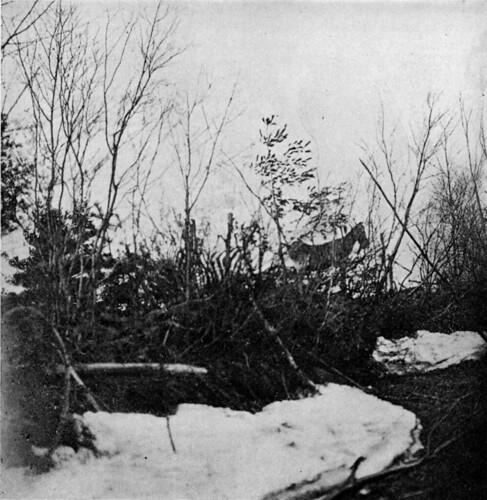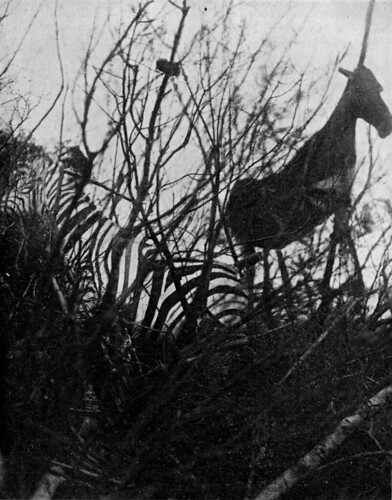President Theodore Roosevelt, who held office from September 14, 1901 to March 4, 1909, agreed in 1906 to accept Charles Freer's art collection into the Smithsonian Institution on behalf of the United States for the future Freer Gallery of Art. Although the Freer collection was chiefly Asian art, also included were works by a select handful of prominent American artists, among them Abbott Thayer. Thayer, known for his angelic portraits of beautiful women and landscapes of New Hampshire's Mount Monadnock, was a avid naturalist who experimented and theorized about the concealing role of animal coloration. Thayer's son Gerald summarized these theories and discoveries in the 1909 book Concealing Coloration in the Animal Kingdom.
Roosevelt was an outdoorsman as well and based on his experiences strongly disputed Thayer's theories. In 1911 he wrote Revealing and Concealing Coloration in Birds and Mammals seeking to refute them. Concerning the coloration of the zebra, Roosevelt wrote:
"The zebra has also, very absurdly, been taken as an example of 'concealing coloration'…as a matter of fact it is not concealing, it is highly advertising, when close at hand…the zebra is purely a beast of the open plains; it never seeks to conceal itself, but trusts always to seeing its foes…Mr. Thayer's ingenious theories of how all the various stripings on a zebra obliterate it are without the smallest foundation in fact. So far as the coloration of the zebra has any effect at all, as regards beast of prey, it is an advertising, not a concealing effect."
Abbott Thayer in the 1912 Concealing Coloration, an Answer to Theodore Roosevelt made this rebuttal:
"Now as to Roosevelt's scoff at the idea that a zebra's white stripes reduce his distinguishability: The accompanying photographs are a total answer.
It only remains to show that this is the view a lion gets when he is near enough to be dangerous; and it is this danger-or-difficulty-moment that costumes in general prove to fit…at a reedy drinking-place such a costume as the zebra's throws all possible difficulties in the lion's way; since so perfect a counterfeit of sky and reeds must cause the lion the greatest proportion of failures to notice the zebra when he is still, or to keep his outline in sight as he bounds away."
These three books are all held in the collections of the Freer-Sackler Library. More information about Abbott Thayer can be found online in the April 1999 Smithsonian Magazine article, A Painter of Angels Became the Father of Camouflage by Richard Meryman, as well as Libraries of the Freer-Sackler Gallery and Smithsonian American Art Museum.—Mike Smith



One Comment
Could it be that the stripes help confuse the predator when there is a large herd of zebra bunched together, sort of a moire effect?